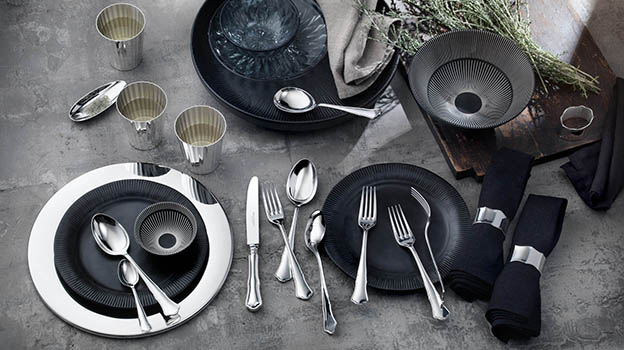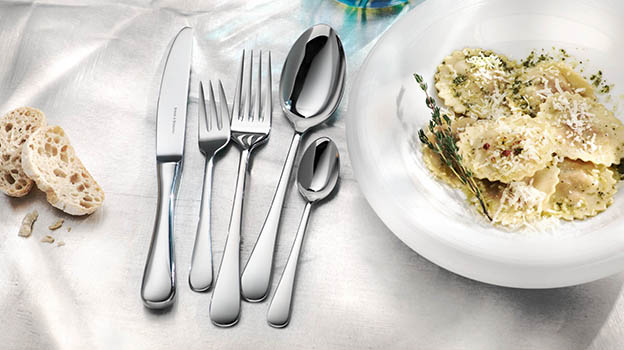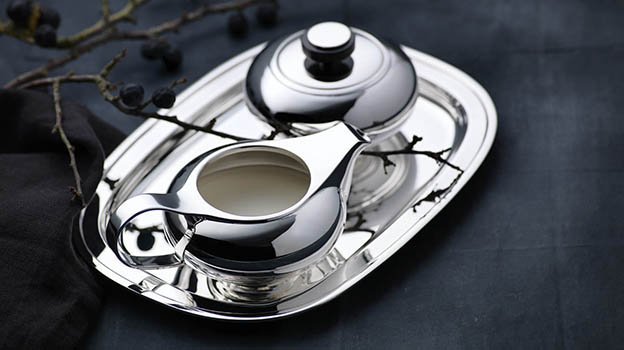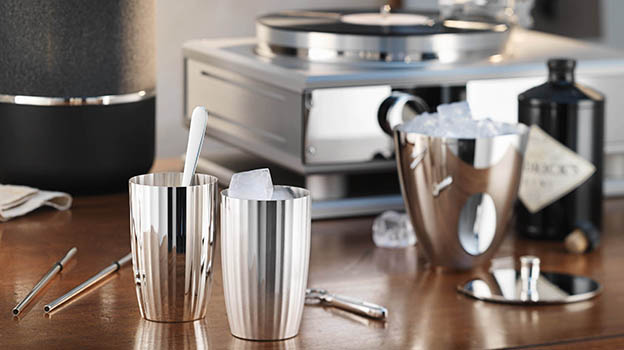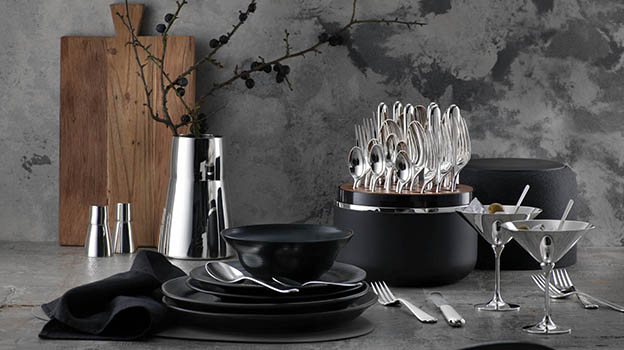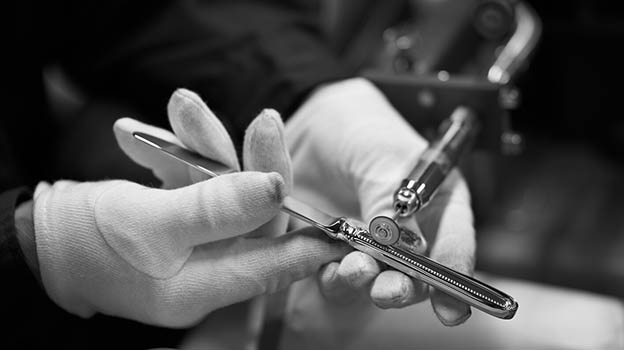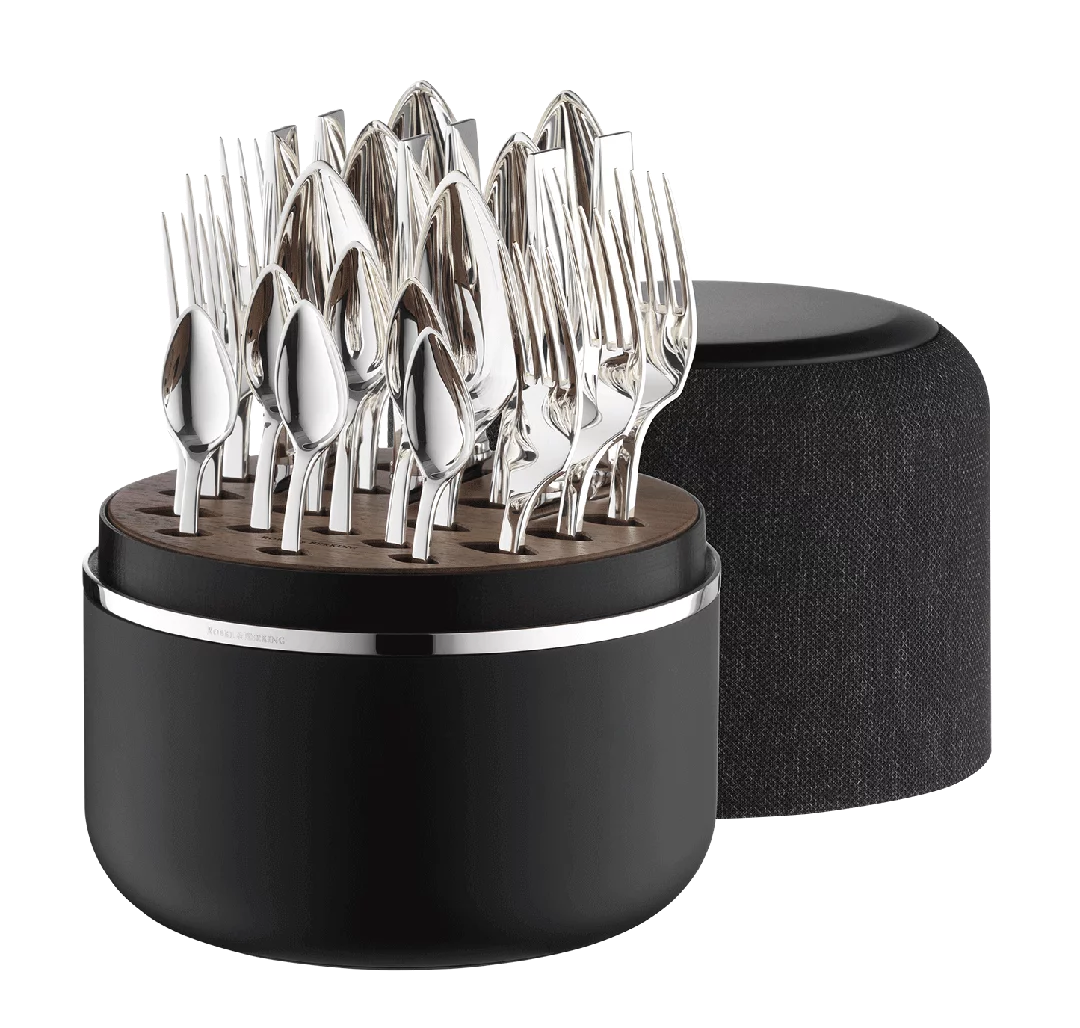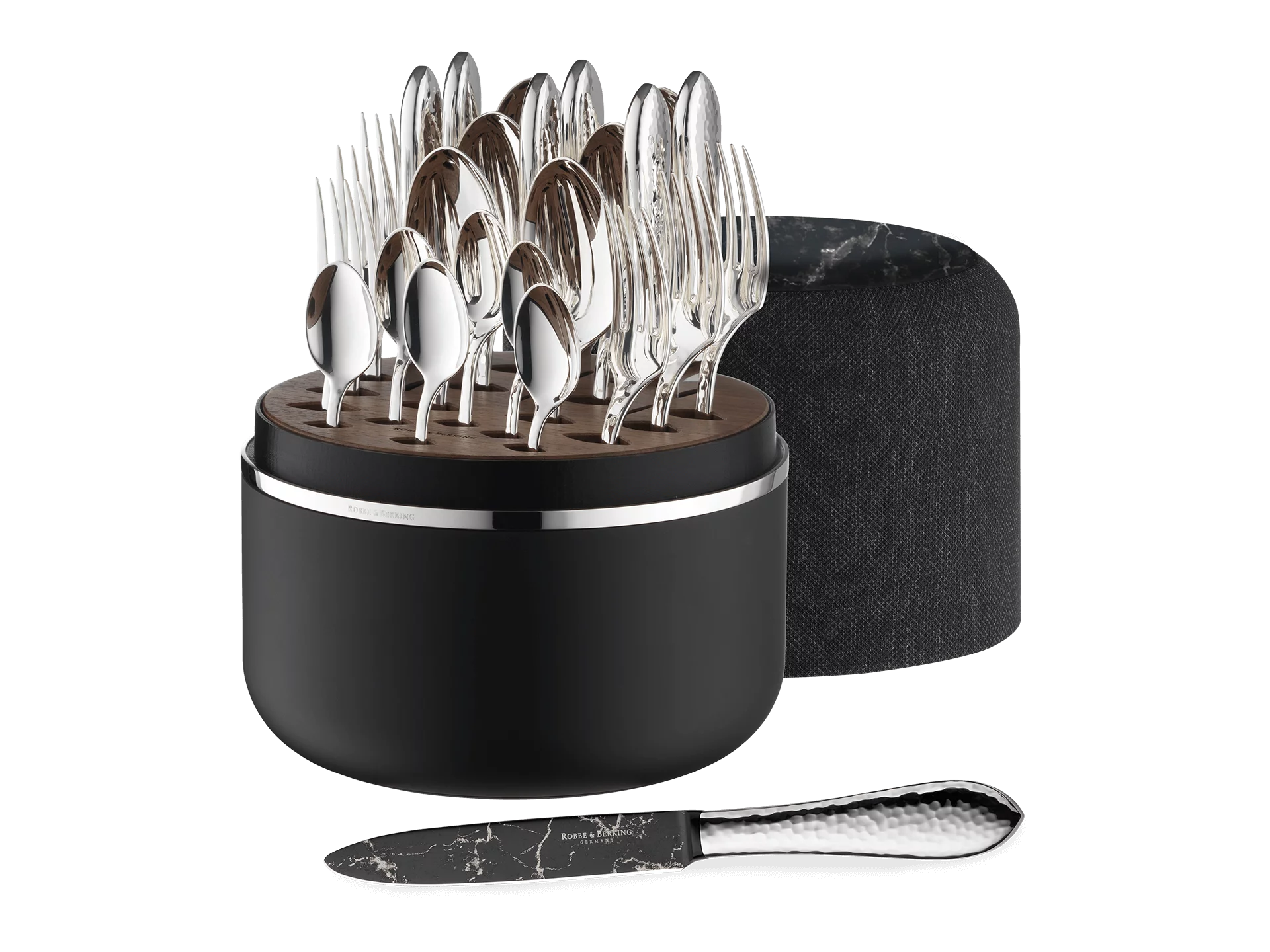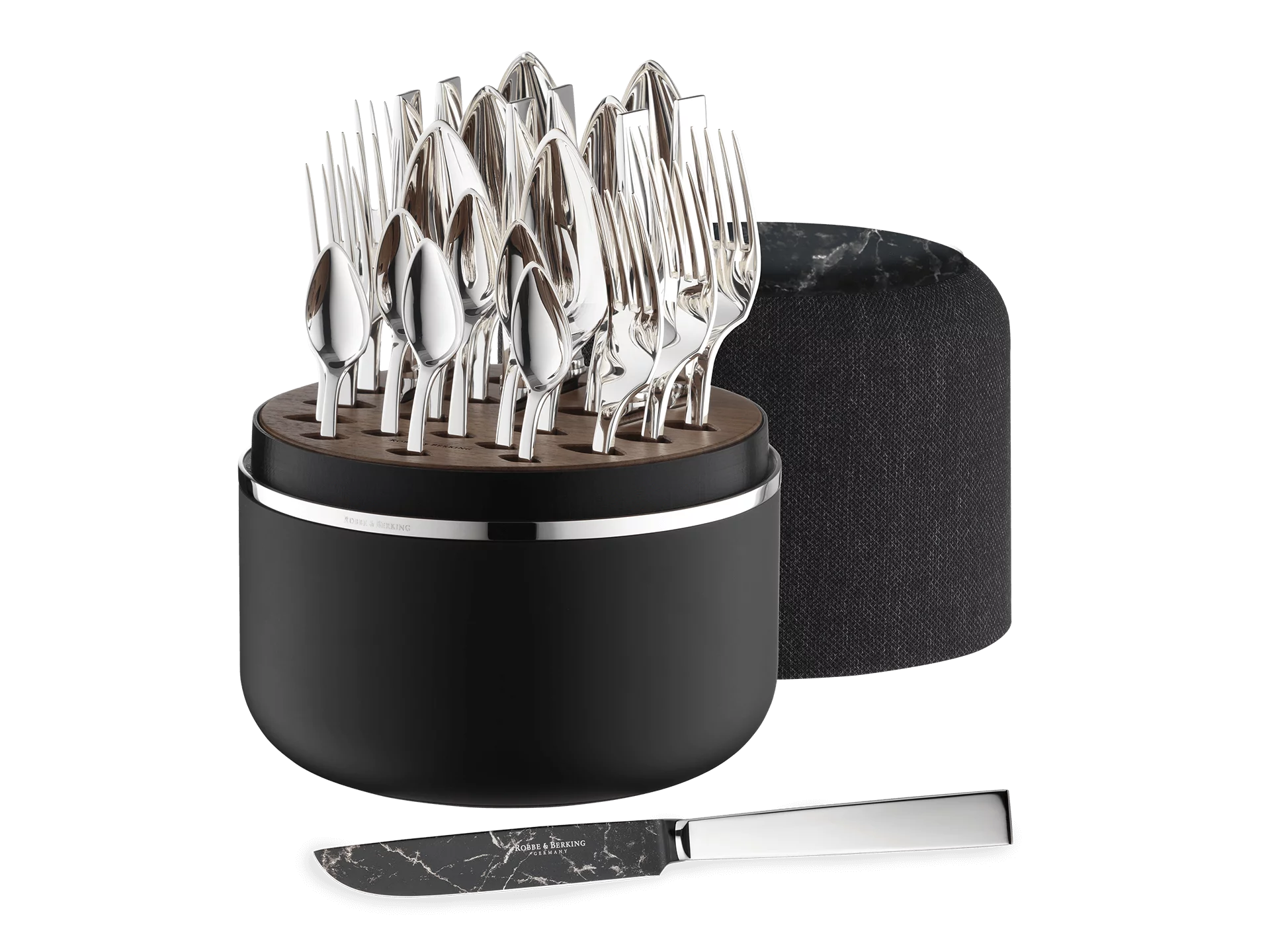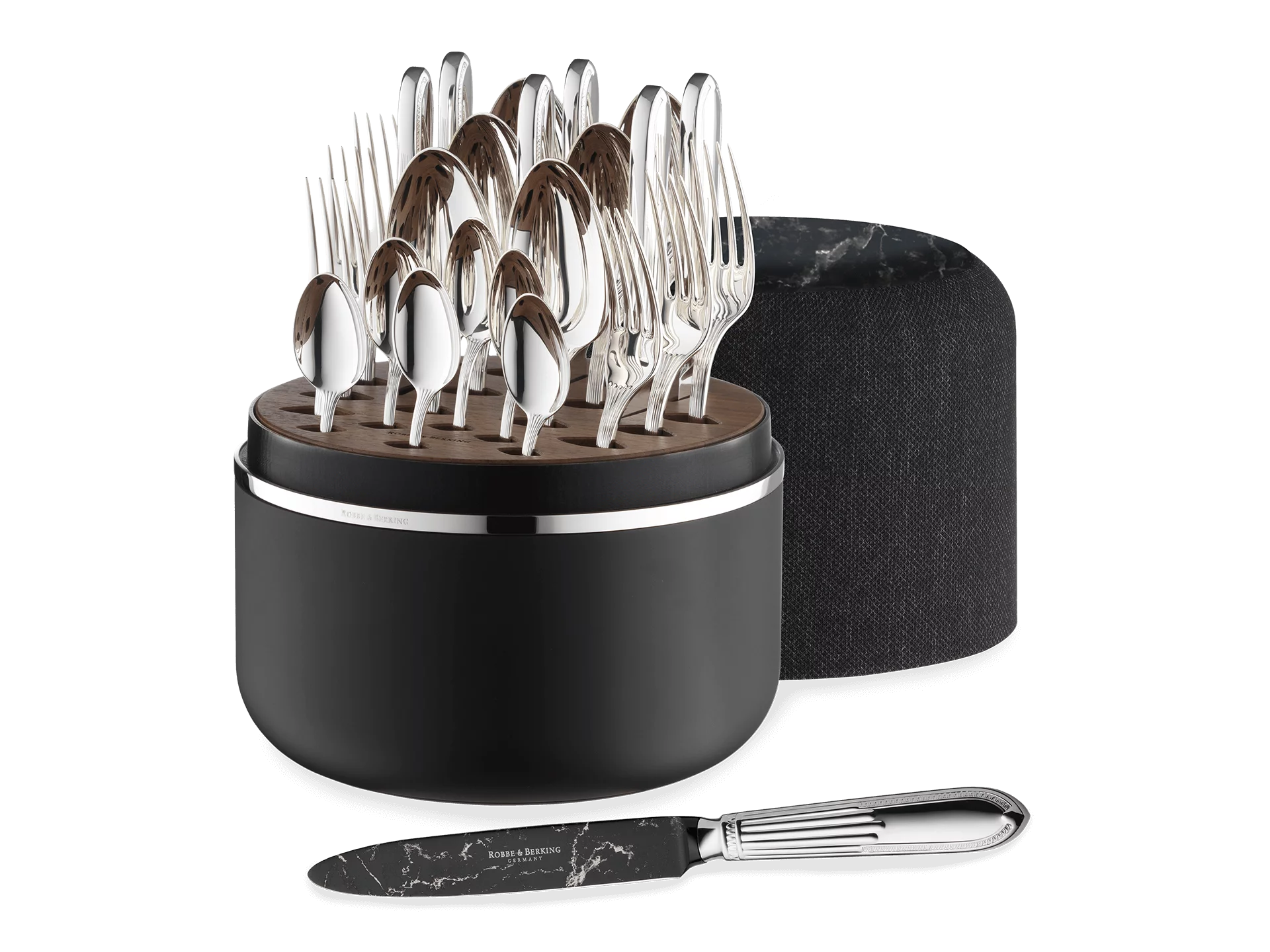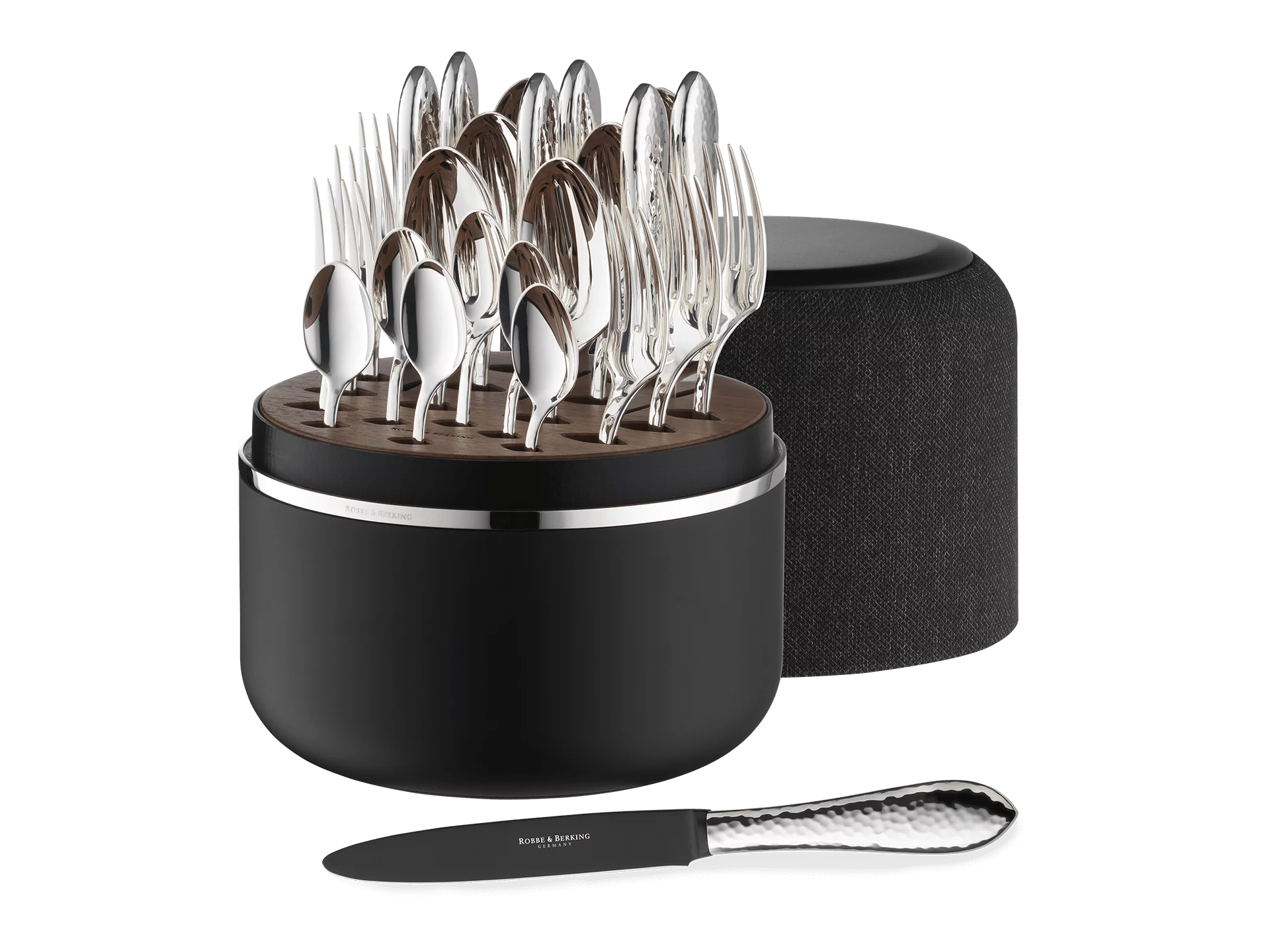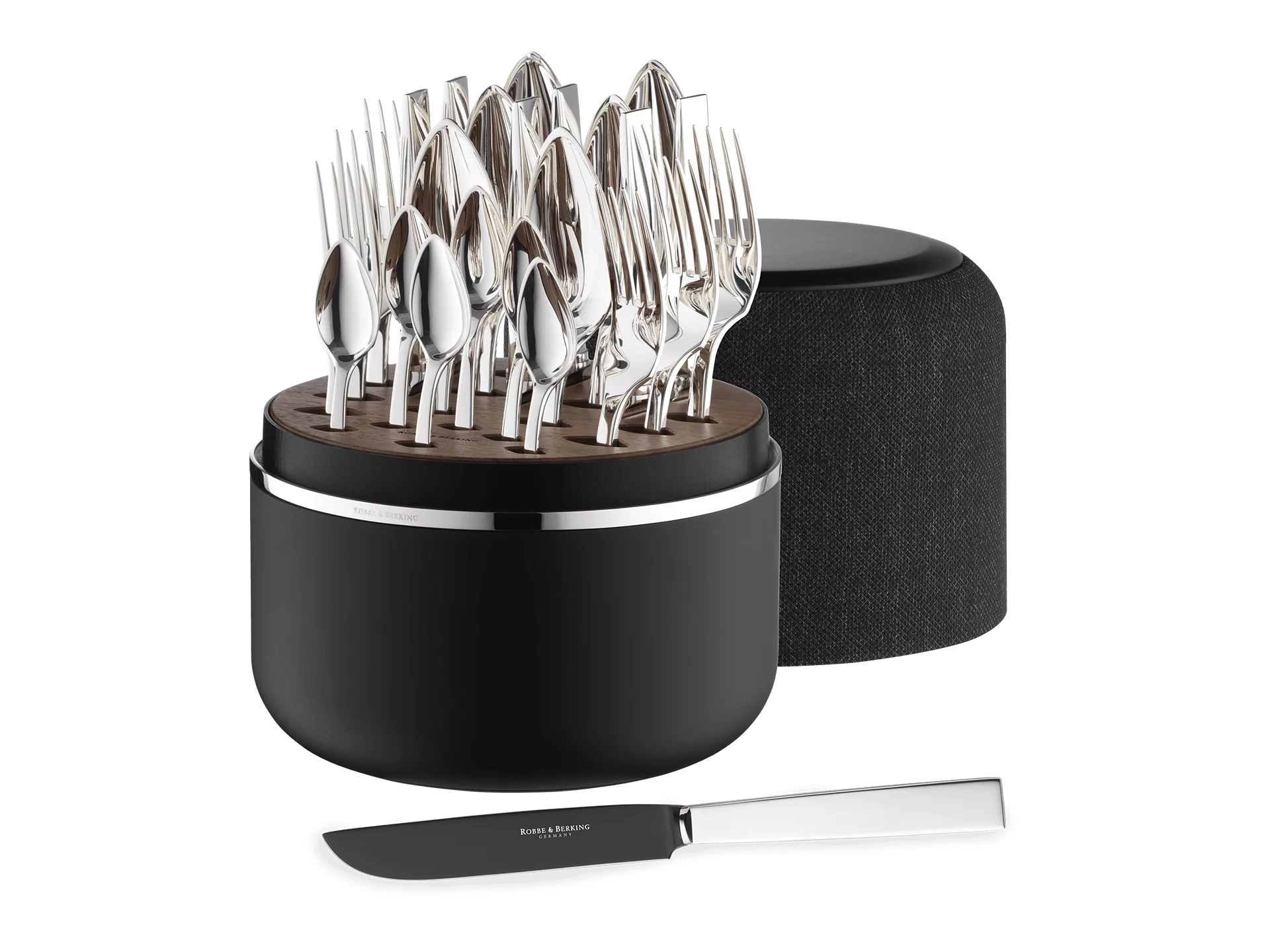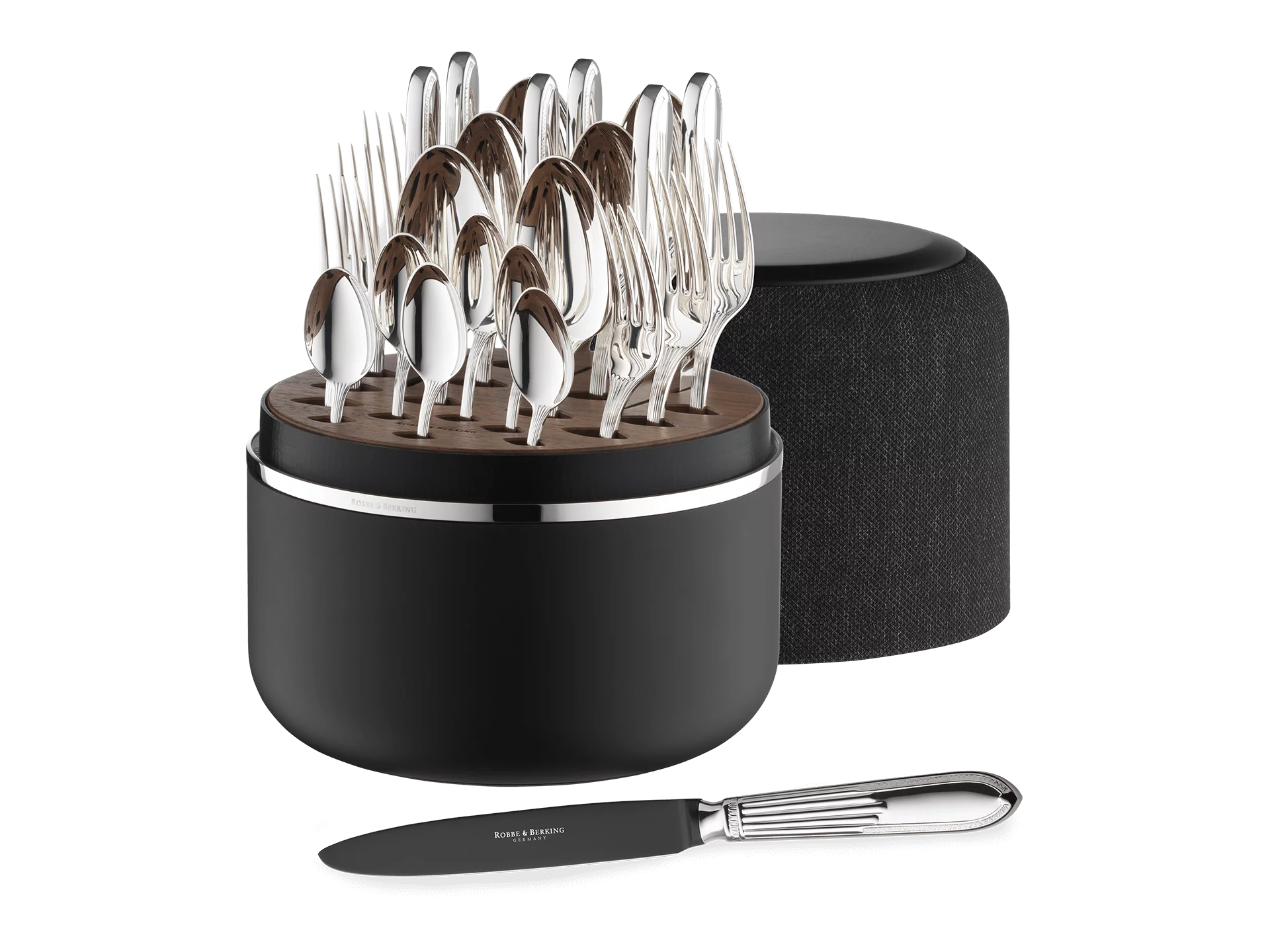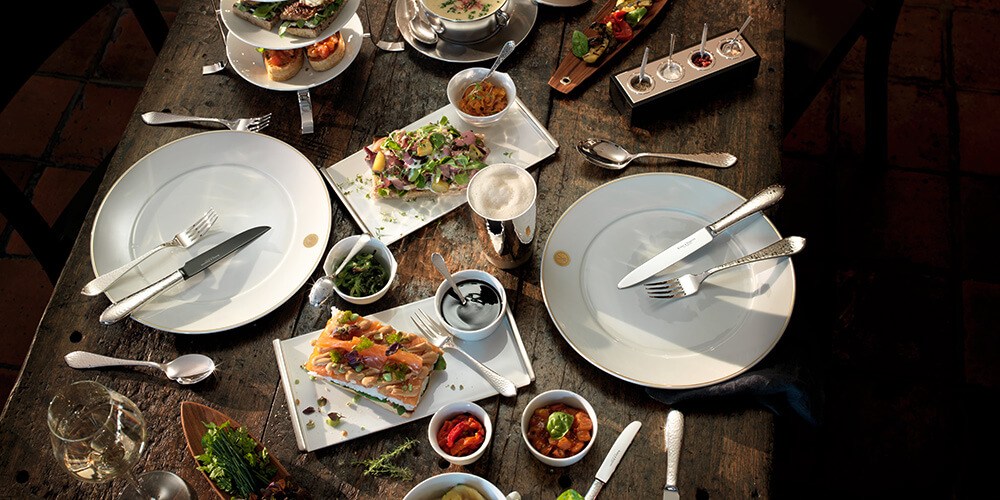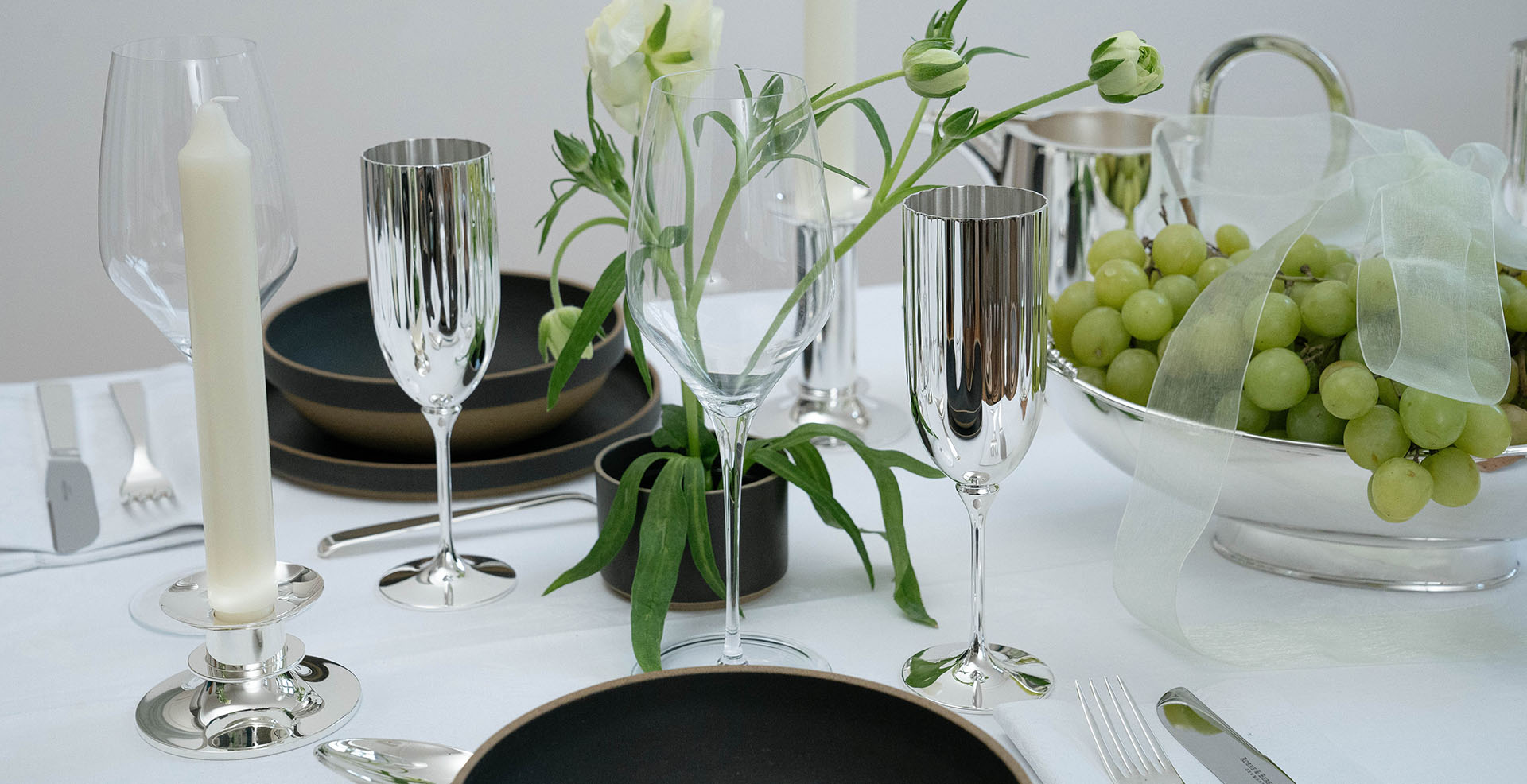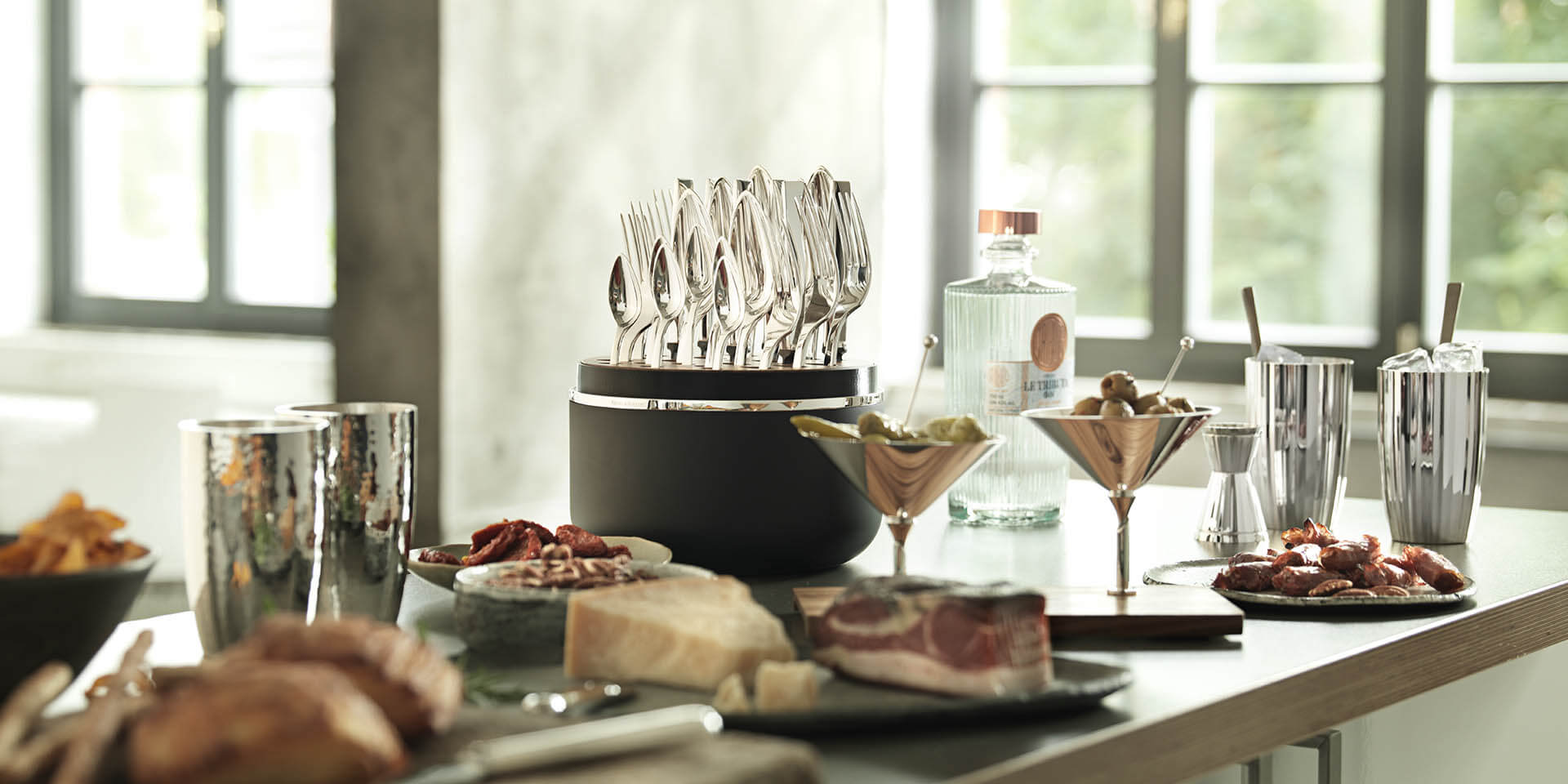
From Opulent Banquets to Sustainable Delights: A Journey through Table and Dining Culture
The preparation, cooking and presentation of food reveal much about the structure and functioning of a society. It is therefore not surprising that food, and the culturally specific etiquettes and equipment that surround the act of dining have been researched and written about by historians and culinary scholars.
Historically, the presentation of food on official and formal occasions, was, as during the Ancien Régime (late Middle Ages until 1789), ornately decorated on large trays, in bowls and in tureens, all served concomitantly and arranged in a double symmetric pattern, enabling diners to serve themselves with preferred portions, a type of service called “service à la française” (Fig. 1).
During the "service à la française," cutlery and tableware was displayed on the table along with all the food dishes, so when diners arrived, they had all the utensils available to begin their meal. The gentlemen helped themselves to the service dishes in their proximity and served the ladies to their right and left accordingly. The peculiarity of this service lies in the effect of the abundance and variety it creates on the table.
Also, the center of the table was reserved for the surtout de table, an elaborate object worked in silver or in vermeil, filled with odorless flowers and (dried) fruit, supplemented by figures in bisque porcelain, which was not replaced until the dessert course.

Table arrangement for the second course
Identifiable dishes include three mammal species, four birds, and four fish and seafood dishes. One can see the serving plates and bowls arranged on the table in a double symmetrical pattern.
Figure 1, Table arrangement for the second course, in Elizabeth Raffald's work "The Experienced English Housekeeper," 4th edition, 1775.
During the turn of the nineteenth century, table and dining culture changed. This change affected not only the food itself, but also the repertoire of tableware, the shapes of table utensils and cutlery, the structure of meals and dishes, including manners and behavior while seated and dining.
A new way of dining set on at the beginning of the nineteenth century, when countless diplomatic dinners took place with meals being prepared as individual portions on plates prior to being served to diners, a type of service entitled “service à la russe” (Fig. 2). In this method of service, the servant played the main role. He prepared the plates in a standardized manner at the sideboard or buffet in the same room, where the serving plates and bowls were located, and then assigned the arranged plates to the diners individually. On the table were only a few decorative pieces, such as candleholders, salt and pepper shakers and odorless flowers, in addition to place settings.
The origin of this new way of serving comes from Russia, as the name suggests. The French traveler Louis Simond (1767-1831) learned about this way of serving food during his stay in London between 1810 and 1811 and brought it back to Paris. However, according to the French writer Armand Lebault in his book "La Table et le repas à travers les siècles," this way of serving was introduced to France by the Russian envoy to Paris, Prince Alexander Borisovich Kourakine (1752-1818), at a reception in Clichy, France, in 1810. According to popular opinion, the new way of serving "à la russe" was confirmed by many supporters and became widespread in Europe by the mid 19th century.
Today, both types of serving, "service à la française" and "service à la russe" are applied in daily life: "service à la française" is popular with larger groups and is therefore often referred to as a family style dinner, where sharing various dishes of food is the norm, while "service à la russe" has become a firm service style in restaurants, sometimes also applied at home.
Table arrangement in "service à la russe"
The Russian style of service, which became popular in the early 19th century, combined the pursuit of organization and aesthetics. The center of the table is occupied by floral decorations surrounded by bowls of petit fours. The intimate space of each diner is delineated by the position of cutlery and glasses. The various types of glasses introduced at that time came depending on their content, e.g. water, white wine, red wine and champagne.
Figure 2, Table arrangement in "service à la russe", 1899, illustration from the book "Usages du monde" Baronne Staffe.

Development towards sustainability
Gradually, another, more casual form of serving and presenting meals and cutlery has developed, whether at home or in a restaurant. The younger generations, who dine out in groups and more frequently than ever, value restaurants where they feel comfortable and to which they can return. Casualness and cosmopolitanism are therefore important components of a convivial and communal style of dining that brings together international food cultures, even in upscale restaurants.
This new informal way of serving is supported by placing a receipient filled with cutlery in the middle of the table , from which everyone helps themselves to the fork, spoon and knife. THE BOX by Robbe & Berking personifies this type of recipient that stores cutlery for a group of six. THE BOX is available with silver-plated and Sterling silver cutlery. The knife blades are available in three different variations: as regular steel blades, as frozen black blades - steel blades covered in a matte black carbon fiber coating, and as marbled blades - steel blades covered with a carbon fiber coating, featuring a unique marble-look.
Although not yet fully developed, there is a new tendency for one's own (silver) cutlery to be carried during travels. While in the Middle Ages it was common to carry one's own dining utensils, which often reflected one´s social status (the most precious models were made of gold with ivory and coral accents, while others were created of silver or wood), today travel cutlery is a kind of personal accessory that contributes to sustainability, helping the elimination of disposable plastic utensils.
Furthermore, if your own travel cutlery is crafted from Sterling silver or silver-plate, it offers an added health benefit as it is automatically used several times a day as an antiseptic tool to boost your immune system. Today, some silverware manufacturers such as Robbe & Berking offer individual pieces of cutlery (with personalization options) for purchase to create a personalized travel set that matches one´s dining preferences with a personalized napkin .
Carrying a small silver travel tumbler is also a way to contribute to sustainability and raise awareness about preserving our planet. In addition to this contribution to a sustainable consumer engagement, the tumbler brings a stylish touch to everyday life.
This trend of carrying your own (travel) cutlery has also been observed among younger generations since 2019. Since the pandemic, the movement has slowly accelerated, both for environmental and health awareness reasons. Each contribution starts with the individual's realization and will make a change when we act as a group. Although it may still be considered bizarre to carry your own (silver) cutlery and (silver) tumbler when traveling, there is a real satisfaction in knowing that you are contributing to a collective action for the common good.
All news from Robbe & Berking: Subscribe to our newsletter!

Robbe & Berking
The silver manufacturer Robbe & Berking was founded in 1874 and is still a pure family business today – now in its 5th generation.
Manu Factum – made by hand – is everything that bears the name of the company. The master silversmiths in the silver manufactory and the master boat builders in the Robbe & Berking yacht manufactory are responsible for the unrivalled quality worldwide. It is not the limited possibilities of rational large-scale production, but the hands of the master craftsmen and women alone that determine the form and quality of each piece of work.
This is how cutlery and tableware of timeless elegance and beauty are created, which never just follow passing fashions or trends, but are made to last for generations. As the market leader in silver cutlery, Robbe & Berking is a supplier to the world's finest businesses.

